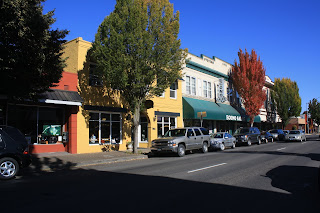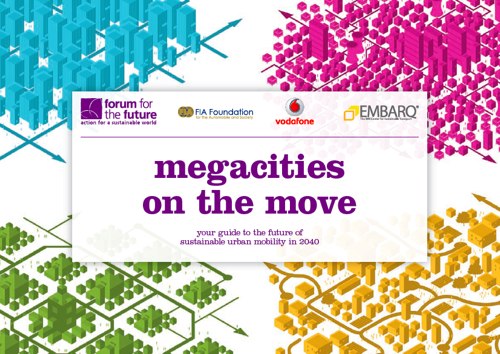I will say it from the start: I am no biologist or physicist or scientist, but having understood and passed the required scientific classes throughout my pre-college education, I feel qualified enough to understand how cities are so incredibly similar to organisms.
 Today, I read a fascinating piece by Jonah Lehrer from the New York Times Magazine about how a physicist, Geoffrey West, compared cities to organisms. Yes, I have been taught the concept of cities growing, surviving, and dying like living things throughout my education in the urban planning field, but it always blows my mind to really stop and think about how real it can be. I think this is what really beckons my calling to study cities from a different perspective; one that analyzes why humans survive best in urban atmospheres and why varying types of personalities are attracted to specific cities and their cultures and ways of life.
Today, I read a fascinating piece by Jonah Lehrer from the New York Times Magazine about how a physicist, Geoffrey West, compared cities to organisms. Yes, I have been taught the concept of cities growing, surviving, and dying like living things throughout my education in the urban planning field, but it always blows my mind to really stop and think about how real it can be. I think this is what really beckons my calling to study cities from a different perspective; one that analyzes why humans survive best in urban atmospheres and why varying types of personalities are attracted to specific cities and their cultures and ways of life.
Jane Jacobs has always been my favorite of the classic urban planners, and her book The Life and Death of Great American Cities will forever be on my bookshelf within reference grabbing distance. The author writes about his conversation with West about Jacobs:
“She compared the crowded sidewalk to a spontaneous ‘ballet,’ filled with people from different walks of life. School kids on the stoops, gossiping homemakers, ‘business lunchers’ on their way back to the office. While urban planners had long derided such neighborhoods for their inefficiencies — that’s why Robert Moses, the ‘master builder’ of New York, wanted to build an eight-lane elevated highway through SoHo and the Village — Jacobs insisted that these casual exchanges were essential. She saw the city not as a mass of buildings but rather as a vessel of empty spaces, in which people interacted with other people. The city wasn’t a skyline — it was a dance.”
All of those things are vital characteristics of true communities, towns, cities. Many of the so called “neighborhoods” across America are far from this ideal portrayal that Jacobs describes. If cities can be considered organisms, I’d say many of our cities are dying organisms. Where is this “dance”? Why are the communities with these “crowded sidewalks” so few and far between?
Our organism-like cities became too large and sprawled out, causing the brains of our civilizations to lose their relevancy and central command power. Now, populations are realizing the damage done and yearning for a return to the original foundations of our metropolitan regions. Community was lost but is returning. We thought we could survive in our own separate personalized modes of transportation, but we can’t. Someone thought building enormous expanses of open pavement was a great place for parking those vehicles instead of using that space for basic human essentials like parks, public plazas, and general space where natural socializing can occur.
Like an organism, more specifically, a human body, a city will perish (or at least be a really unpleasant and embarrassing place to live) if certain things are glossed over. This simply cannot be reiterated enough. I am beyond excited to see just a general interest in people of my generation realizing the need for cities and wanting to stay or relocate into more urban areas. This is what makes cities survive! Initiatives like Obama’s Office of Urban Affairs are a step in the right direction for the future of America, even if they may just be for liaison purposes currently.
Wow. I really make city related things sound exciting! Or maybe I put you to sleep… Either way, dense, thriving, urban districts are our future. Why shouldn’t we be supporting them in every way possible?
 I am so excited for January 9th to come! Lane Transit District's second EmX line will be opening and there will be an abundance of festivities taking place that day including free rides on the successful BRT lines continuing throughout the week! I just might spend my entire workday riding the new line...
I am so excited for January 9th to come! Lane Transit District's second EmX line will be opening and there will be an abundance of festivities taking place that day including free rides on the successful BRT lines continuing throughout the week! I just might spend my entire workday riding the new line...









 Also over at TheCityFix,
Also over at TheCityFix, 

